Business
My European Favourites: Český Krumlov

Český Krumlov is the most picturesque medieval town in the Czech Republic, and one of the best small town destinations in Central Europe. Český Krumlov is located in the South Bohemia Region of the Czech Republic about a two hour drive directly south from Prague and only thirty minutes from the nearby city of Ceske Budejovice. It is only about thirty kilometers from the Austrian border, and Linz is only an hour away. It is a natural stop from Prague to Salzburg, and we frequently stay in Ceske Budejovice, where many of our hockey groups play games or train at former NHL and Czech hockey star, Jaroslav Pouzar’s arena.
Český Krumlov’s old town, a UNESCO World Heritage Site, is nestled in between a meandering river and is surrounded by lush green hills and a towering castle above. With narrow cobblestone streets and a mixture of baroque and renaissance architecture, this could be the backdrop to any fairytale.
After we enter the town, we will park our bus across the street from a little park, called the Deer Garden, that is dwarfed by the back side of the Český Krumlov Castle. To get up to the castle, there is a path at an incline just on the right of the park or there are stairs up to the castle located at the back right of the park.
Once you reach the top, on the right you will find the eleven hectare castle garden. The garden includes a cascade fountain, an outdoor amphitheatre with a revolving auditorium, the Bellaria summer palace and the castle’s winter riding hall, which is now used to host special events.
If we go left instead of going into the park, a few steps away is a small gated entrance to a terrace that you should not miss. The terrace offers a spectacular panorama of the river, the town below, the castle on the left and the surrounding area. Your camera will be busy here and, at times, you will have numerous people jockeying for position to get that perfect shot. Please note that the terrace is not always open in the evening.

Cesky Krumlov Castle from the photo terrace and from the Lavka pod Zamkem wooden bridge.
Český Krumlov Castle
The Český Krumlov Castle dates back to 1240 when it was built by the Witigonen (Vitkovci) dynasty. In 1302, the Rosenberg dynasty became owners of the castle, and you will see their family’s five petalled rose logo at various locations throughout the city. In 1622, the castle was transferred to the Austrian Eggenberg family who expanded the castle, including adding the unique baroque theatre that bears their name. Today, the local brewery in Český Krumlov is named after the Eggenbergs. The Schwarzenberg family took over the castle from 1719 until 1947 when it was transferred to the Czechoslovak state. The castle complex, with five courtyards, is listed as a Czech National Monument and is listed on the UNESCO World Heritage List.
What would an old castle be without a good ghost story? In medieval times, the appearance of a White Lady during the day or night was an omen that someone in the family would soon die. At the Český Krumlov Castle, legend has it that the castle is haunted by their own White Lady, Perchta of Rosenberg. Her husband treated her poorly and on his death bed he asked her for forgiveness. She refused and her husband cursed her. Since her death, her ghost has haunted her former husband’s estates including the castle.

Cloak bridge, entrance into the 4th courtyard and frescoes on the courtyard walls.
When we leave the photo terrace, we cross the fifth castle courtyard surrounded by the baroque castle theatre and the renaissance house to the white and grey Cloak Bridge. The bridge, which offers more great views of the old town and river, has three stories above the arched walkway that connect the castle to the theatre.
Entering the area called the Upper Castle, we pass through two small courtyards, named the fourth and third castle courtyards. The courtyards’ facades were painted in the 16th and 17th centuries. The frescoes painted on flat walls use the “trompe–l’oeil” technique to create the optical illusion that the walls are three-dimensional brick with intricate stone decorations and inlayed statues. The “Upper Castle’s” renaissance interiors are palatial with an important collection of paintings, tapestries and furniture. The castle’s underground foundations, called the Wenceslas Cellars, are a labyrinth of pillars and arches. Exiting the third courtyard, we go down a steep and windy passage way, which may have been used for vehicles.

A sundial, the second courtyard fountain and tower. The first courtyard and the red gate.
Arriving at the second castle courtyard, we find the Burgrave’s house from 1578. The Burgrave, or “Count”, was the governor of the town, with judicial and military powers bestowed on him by the Holy Roman Emperor. From 1742-1948, the lower floor of the Burgrave’s house was used to house the Schwarzenberg grenadier guard.
The courtyard has a stone fountain from 1641 in the middle and the colorful castle tower in the corner. The tower and the adjoining “Hradek” building are the two oldest parts of the castle. If you climb the tower, you will get amazing views of the castle and the town.

The castle Bear Moat with bears enjoying bread, vegetables, apples and watermelon snacks.
To access the first courtyard, we cross a small bridge that has a Bear Moat below. There have been bears in the moat since 1707, and most times we can see them walking around or eating their vegetables and fruit. Unfortunately, we don’t always see them as they like the area under the bridge. This is the largest courtyard and was used as an agricultural area and animal enclosure. We leave the castle through the Red Gate and continue until we reach the Latrán street where we turn right. A few meters away on your left is the entrance to the Monastery.
Monastery of the Minorites
After the castle, the monastery is the second largest historic complex in Český Krumlov. The medieval monastery was founded for the brothers and sisters of the order of St. Francis of Assisi in 1350. St. Francis gave the name “Friar Minor” or “Minorites” to the Franciscans. The order of St. Clare, “Poor Claires” or the “Clarissas,” is the name of the female branch of the Franciscans. The monastery church located in the center of the complex separates the convents of the Minorites (here from 1357-1950) and Clarissas (here from 1361-1782).

The Latrán street, a Trdelník vendor and the crucifix on Lazebnicky bridge.
Latrán Street and Lazebnicky Most
The renaissance area just outside the castle and across the river from the old town center was once the home of castle servants. Today the cobble stone Latrán Street’s colorful houses are full of shops, cafes, restaurants and artist galleries. Just off the Latrán, you will find artist workshops featuring paintings, iron works, statues and furniture. Some of these artist workshops are decorated with interesting murals.
Undoubtably, you will be hit by the sweet aroma of the chimney cake or Trdelník. The Trdelník is a rolled dough which is wrapped around a thick spit, baked over hot coals and topped with sugar, walnuts and sometimes cinnamon. You can find variations of this treat throughout the Czech Republic, Slovakia and Hungary.
Connecting the Latrán street to the old town is the wooden Lazebnicky bridge with a large crucifix in the middle. Form the bridge, you have a magnificent view of the castle above, the Vltava river meandering its way around the town, and the riverfront houses and restaurant patios of the old town.

The Český Krumlov old town square with the Marian Plague column and city hall.
Historic Old Town
Once you cross the bridge, if you go forward on the Radniční street for about a hundred meters you will arrive at the Town Square. Instead, we will turn right and take the curved Dlouhá Street with interesting cafes, restaurants and hotels. At the end of the Dlouhá street, we arrive at the Široká street. Turning right we will come to the old mill where we can see the waterwheel still turning and we get another great view of the castle. We continue in the other direction leisurely making our way down the wide and vibrant Široká street until we reach a junction where three streets meet. This is a very picturesque little square with colorful buildings decorated with frescoes.
Only a few meters away from this junction, we find ourselves in the Český Krumlov town square or Náměstí Svornosti. The square has served not only as a market in medieval times, but also as a place of execution. The large white building with renaissance arcades is the 16th century Český Krumlov Town Hall. The four coats-of-arms painted on the façade of the building are those of the Eggenbergs, the Schwarzenbergs, the town and of the Czech state of Bohemia. Like many towns in the Czech Republic, the square has a Marian Plague Column with a fountain at the center. The plague columns give thanks to the Virgin Mary for the end of the plague that killed many throughout Europe in the 17th century. The beautiful buildings adorned with stucco decorations and frescoes around the square once belonged to the town’s upper class and have been restored to their original splendor.

The St. Vitus church from the river, the old town’s Široká street and the three street junction.
Church of St. Vitus
From the town square you will see the 19th century spire and tall roof of the Roman Catholic church of St. Vitus. A short climb up Horní Ulice street you will reach the church entrance. The gothic church has a white interior with an impressive vaulted ceiling supported by stone columns. The tall but clear gothic windows allow light to flood the nave and they push your eyes upwards to the magnificent ceiling. Dating back to the 13th century when the site became a place of worship, the church has undergone a few additions and changes over the years. The church is the burial place of notable Bohemian families including generations of the aforementioned Rosenbergs and Schwartzenbergs.
Not far from the church is a little garden called the Seminární Zahrada, or the Seminary Garden. The garden is part of the Regional Museum, which used to be a seminary for the Jesuits. Like the terrace by the castle, this garden is one of the best spots in town to get that spectacular panoramic photo. The castle and tower are prominent in the background, seemingly rising above a sea of the red tiled roofs below.

Panoramic view from the Seminary Garden and buskers on the Latrán Street.
Rafting on the Vltava
As you leave the old town back to the parking area, you will cross the Lavka pod Zamkem wooden bridge which leads to the Deer Garden. The bridge offers a few more photo opportunities of the river, the castle and the Cloak Bridge. One of the most interesting things to see from the bridge is the wier on the Vltava River that has a spot on the right for rafters to slide down from the higher water level to the lower level. Rafting is very popular, and in summer months you will see raft after raft leisurely floating down the river. The Malecek Rafting company offers canoe and raft rentals with trips of various durations from a thirty-minute trip in the city center all the way to half-day and full-day trips further down the river. They also offer a fifty-minute historical cruise on a twelve-person wooden raft. In the middle ages and beyond raftsmen used the Vltava to transport goods and raw materials like wood and salt. Today, people can enjoy this experience in amazing surroundings.

Rafters and canoers going down the Vltava Rivers’ weir and leisurely past the castle.
Český Krumlov has many small museums worth visiting. My favourite is the Museum of Commerce (Muzeum Obchodu) located in the old town just as you cross the Lazebnicky bridge. The museum has recreated shop interiors, shop machinery and advertising from the early 1900s. Individual packaging of products, like we are used to today, was non-existent. They have a great display of metal dispensary containers where customers would get their coffee beans, sugar, flour or other goods. They also have old style metallic advertising signs for sale. Across from that museum, there is an antique shop with very unique items and next door is the Fairytale House & Puppet Museum.
Other museums you may want to visit in Český Krumlov include the Museum Fotoatelier Seidel, the Egon Schiele Art Centrum, the Moldavite Museum (Muzeum Vltavinu), the Regional Museum and the Torture Museum. There are many other little museums around town worth visiting. Nearby, hikers enjoy climbing the 1,084 meter high Mount Klet’ and guided tours of the Graphite Mine.
Český Krumlov is the second most popular tourist destination in the Czech Republic. I have been to this medieval town numerous times with my tour groups and I am always excited to include it in my itineraries.
Explore Europe With Us
Azorcan Global Sport, School and Sightseeing Tours have taken thousands to Europe on their custom group tours since 1994. Visit azorcan.net to see all our custom tour possibilities for your group of 26 or more. Individuals can join our “open” signature sport, sightseeing and sport fan tours including our popular Canada hockey fan tours to the World Juniors. At azorcan.net/media you can read our newsletters and listen to our podcasts.
Images compliments of Paul Almeida and Azorcan Tours.
(This article was originally published on April 11, 2021).
Click below to read Paul’s sobering story about Canada’s role in WWI.
Alberta
Ford and Trudeau are playing checkers. Trump and Smith are playing chess
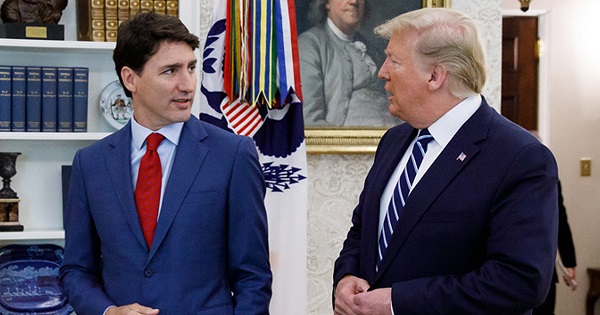
By Dan McTeague
Ford’s calls for national unity – “We need to stand united as Canadians!” – in context feels like an endorsement of fellow Electric Vehicle fanatic Trudeau. And you do wonder if that issue has something to do with it. After all, the two have worked together to pump billions in taxpayer dollars into the EV industry.
There’s no doubt about it: Donald Trump’s threat of a blanket 25% tariff on Canadian goods (to be established if the Canadian government fails to take sufficient action to combat drug trafficking and illegal crossings over our southern border) would be catastrophic for our nation’s economy. More than $3 billion in goods move between the U.S. and Canada on a daily basis. If enacted, the Trump tariff would likely result in a full-blown recession.
It falls upon Canada’s leaders to prevent that from happening. That’s why Justin Trudeau flew to Florida two weeks ago to point out to the president-elect that the trade relationship between our countries is mutually beneficial.
This is true, but Trudeau isn’t the best person to make that case to Trump, since he has been trashing the once and future president, and his supporters, both in public and private, for years. He did so again at an appearance just the other day, in which he implied that American voters were sexist for once again failing to elect the nation’s first female president, and said that Trump’s election amounted to an assault on women’s rights.
Consequently, the meeting with Trump didn’t go well.
But Trudeau isn’t Canada’s only politician, and in recent days we’ve seen some contrasting approaches to this serious matter from our provincial leaders.
First up was Doug Ford, who followed up a phone call with Trudeau earlier this week by saying that Canadians have to prepare for a trade war. “Folks, this is coming, it’s not ‘if,’ it is — it’s coming… and we need to be prepared.”
Ford said that he’s working with Liberal Finance Minister Chrystia Freeland to put together a retaliatory tariff list. Spokesmen for his government floated the idea of banning the LCBO from buying American alcohol, and restricting the export of critical minerals needed for electric vehicle batteries (I’m sure Trump is terrified about that last one).
But Ford’s most dramatic threat was his announcement that Ontario is prepared to shut down energy exports to the U.S., specifically to Michigan, New York, Wisconsin, and Minnesota, if Trump follows through with his plan. “We’re sending a message to the U.S. You come and attack Ontario, you attack the livelihoods of Ontario and Canadians, we’re going to use every tool in our toolbox to defend Ontarians and Canadians across the border,” Ford said.
Now, unfortunately, all of this chest-thumping rings hollow. Ontario does almost $500 billion per year in trade with the U.S., and the province’s supply chains are highly integrated with America’s. The idea of just cutting off the power, as if you could just flip a switch, is actually impossible. It’s a bluff, and Trump has already called him on it. When told about Ford’s threat by a reporter this week, Trump replied “That’s okay if he does that. That’s fine.”
And Ford’s calls for national unity – “We need to stand united as Canadians!” – in context feels like an endorsement of fellow Electric Vehicle fanatic Trudeau. And you do wonder if that issue has something to do with it. After all, the two have worked together to pump billions in taxpayer dollars into the EV industry. Just over the past year Ford and Trudeau have been seen side by side announcing their $5 billion commitment to Honda, or their $28.2 billion in subsidies for new Stellantis and Volkswagen electric vehicle battery plants.
Their assumption was that the U.S. would be a major market for Canadian EVs. Remember that “vehicles are the second largest Canadian export by value, at $51 billion in 2023 of which 93% was exported to the U.S.,”according to the Canadian Vehicle Manufacturers Association, and “Auto is Ontario’s top export at 28.9% of all exports (2023).”
But Trump ran on abolishing the Biden administration’s de facto EV mandate. Now that he’s back in the White House, the market for those EVs that Trudeau and Ford invested in so heavily is going to be much softer. Perhaps they’d like to be able to blame Trump’s tariffs for the coming downturn rather than their own misjudgment.
In any event, Ford’s tactic stands in stark contrast to the response from Alberta, Canada’s true energy superpower. Premier Danielle Smith made it clear that her province “will not support cutting off our Alberta energy exports to the U.S., nor will we support a tariff war with our largest trading partner and closest ally.”
Smith spoke about this topic at length at an event announcing a new $29-million border patrol team charged with combatting drug trafficking, at which said that Trudeau’s criticisms of the president-elect were, “not helpful.” Her deputy premier Mike Ellis was quoted as saying, “The concerns that president-elect Trump has expressed regarding fentanyl are, quite frankly, the same concerns that I and the premier have had.” Smith and Ellis also criticized Ottawa’s progressively lenient approach to drug crimes.
(For what it’s worth, a recent Léger poll found that “Just 29 per cent of [Canadians] believe Trump’s concerns about illegal immigration and drug trafficking from Canada to the U.S. are unwarranted.” Perhaps that’s why some recent polls have found that Trudeau is currently less popular in Canada than Trump at the moment.)
Smith said that Trudeau’s criticisms of the president-elect were, “not helpful.” And on X/Twitter she said, “Now is the time to… reach out to our friends and allies in the U.S. to remind them just how much Americans and Canadians mutually benefit from our trade relationship – and what we can do to grow that partnership further,” adding, “Tariffs just hurt Americans and Canadians on both sides of the border. Let’s make sure they don’t happen.”
This is exactly the right approach. Smith knows there is a lot at stake in this fight, and is not willing to step into the ring in a fight that Canada simply can’t win, and will cause a great deal of hardship for all involved along the way.
While Trudeau indulges in virtue signaling and Ford in sabre rattling, Danielle Smith is engaging in true statesmanship. That’s something that is in short supply in our country these days.
As I’ve written before, Trump is playing chess while Justin Trudeau and Doug Ford are playing checkers. They should take note of Smith’s strategy. Honey will attract more than vinegar, and if the long history of our two countries tell us anything, it’s that diplomacy is more effective than idle threats.
Dan McTeague is President of Canadians for Affordable Energy.
Business
Comparing four federal finance ministers in moments of crisis
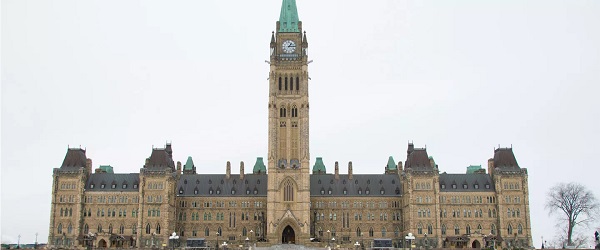
From the Fraser Institute
By Grady Munro, Milagros Palacios and Jason Clemens
The sudden resignation of federal finance minister (and deputy prime minister) Chrystia Freeland, hours before the government was scheduled to release its fall economic update has thrown an already badly underperforming government into crisis. In her letter of resignation, Freeland criticized the government, and indirectly the prime minister, for “costly political gimmicks” and irresponsible handling of the country’s finances and economy during a period of great uncertainty.
But while Freeland’s criticism of recent poorly-designed federal policies is valid, her resignation, in some ways, tries to reshape her history into that of a more responsible finance minister. That is, however, ultimately an empirical question. If we contrast the performance of the last four long-serving (more than three years) federal finance ministers—Paul Martin (Liberal), Jim Flaherty (Conservative), Bill Morneau (Liberal) and Freeland (Liberal)—it’s clear that neither Freeland nor her predecessor (Morneau) were successful finance ministers in terms of imposing fiscal discipline or overseeing a strong Canadian economy.
Let’s first consider the most basic measure of economic performance, growth in per-person gross domestic product (GDP), adjusted for inflation. This is a broad measure of living standards that gauges the value of all goods and services produced in the economy adjusted for the population and inflation. The chart below shows the average annual growth in inflation-adjusted per-person GDP over the course of each finance minister’s term. (Adjustments are made to reflect the effects of temporary recessions or unique aspects of each minister’s tenure to make it easier to compare the performances of each finance minister.)

Sources: Statistics Canada Table 17-10-0005-01, Table 36-10-0222-01; 2024 Fall Economic Statement
By far Paul Martin oversaw the strongest growth in per-person GDP, with an average annual increase of 2.4 per cent. Over his entire tenure spanning a decade, living standards rose more than 25 per cent.
The average annual increase in per-person GDP under Flaherty was 0.6 per cent, although that includes the financial recession of 2008-09. If we adjust the data for the recession, average annual growth in per-person GDP was 1.4 per cent, still below Martin but more than double the rate if the effects of the recession are included.
During Bill Morneau’s term, average annual growth in per-person GDP was -0.5 per cent, although this includes the effects of the COVID recession. If we adjust to exclude 2020, Morneau averaged a 0.7 per cent annual increase—half the adjusted average annual growth rate under Flaherty.
Finally, Chrystia Freeland averaged annual growth in per-person GDP of -0.3 per cent during her tenure. And while the first 18 or so months of her time as finance minister, from the summer of 2020 through 2021, were affected by the COVID recession and the subsequent rebound, the average annual rate of per-person GDP growth was -0.2 per cent during her final three years. Consequently, at the time of her resignation from cabinet in 2024, Canadian living standards are projected to be 1.8 per cent lower than they were in 2019.
Let’s now consider some basic fiscal measures.
Martin is by far the strongest performing finance minister across almost every metric. Faced with a looming fiscal crisis brought about by decades of deficits and debt accumulation, he reduced spending both in nominal terms and as a share of the economy. For example, after adjusting for inflation, per-person spending on federal programs dropped by 5.9 per cent during his tenure as finance minister (see chart below). As a result, the federal government balanced the budget and lowered the national debt, ultimately freeing up resources via lower interest costs for personal and business tax relief that made the country more competitive and improved incentives for entrepreneurs, businessowners, investors and workers.

*Note: Freeland’s term began in 2020, but given the influence of COVID, 2019 is utilized as the baseline for the overall change in spending. Sources: Statistics Canada Table 17-10-0005-01, Table 36-10-0130-01; Fiscal Reference Tables 2024; 2024 Fall Economic Statement
Flaherty’s record as finance minister is mixed, in part due to the recession of 2008-09. Per-person program spending (inflation adjusted) increased by 11.6 per cent, and there was a slight (0.6 percentage point) increase in spending as a share of the economy. Debt also increased as a share of the economy, although again, much of the borrowing during Flaherty’s tenure was linked with the 2008-09 recession. Flaherty did implement tax relief, including extending the business income tax cuts started under Martin, which made Canada more competitive in attracting investment and fostering entrepreneurship.
Both Morneau and Freeland recorded much worse financial performances than Flaherty and Martin. Morneau increased per-person spending on programs (inflation adjusted) by 37.1 per cent after removing 2020 COVID-related expenditures. Even if a more generous assessment is used, specifically comparing spending in 2019 (prior to the effects of the pandemic and recession) per-person spending still increased by 18.1 per cent compared to the beginning of his tenure.
In his five years, Morneau oversaw an increase in total federal debt of more than $575 billion, some of which was linked with COVID spending in 2020. However, as multiple analyses have concluded, the Trudeau government spent more and accumulated more debt during COVID than most comparable industrialized countries, with little or nothing to show for it in terms of economic growth or better health performance. Simply put, had Morneau exercised more restraint, Canada would have accumulated less debt and likely performed better economically.
Freeland’s tenure as finance minister is the shortest of the four ministers examined. It’s nonetheless equally as unimpressive as that of her Trudeau government predecessor (Morneau). If we use baseline spending from 2019 to adjust for the spike in spending in 2020 when she was appointed finance minister, per-person spending on programs by the federal government (inflation adjusted) during Freeland’s term increased by 4.1 per cent. Total federal debt is expected to increase from $1.68 trillion when Freeland took over to an estimated $2.2 trillion this year, despite the absence of a recession or any other event that would impair federal finances since the end of COVID in 2021. For some perspective, the $470.8 billion in debt accumulated under Freeland is more than double the $220.3 billion accumulated under Morneau prior to COVID. And there’s an immediate cost to that debt in the form of $53.7 billion in expected federal debt interest costs this year. These are taxpayer resources unavailable for actual services such as health care.
Freeland’s resignation from cabinet sent shock waves throughout the country, perhaps relieving her of responsibility for the Trudeau government’s latest poorly-designed fiscal policies. However, cabinet ministers bear responsibility for the performance of their ministries—meaning Freeland must be held accountable for her previous budgets and the fiscal and economic performance of the government during her tenure. Compared to previous long-serving finances ministers, it’s clear that Chrystia Freeland, and her Trudeau predecessor Bill Morneau, failed to shepherd a strong economy or maintain responsible and prudent finances.
-

 Alberta15 hours ago
Alberta15 hours agoProposed $70 billion AI data centre in MD of Greenview could launch an incredible new chapter for western Canadian energy
-

 COVID-192 days ago
COVID-192 days agoAustralian doctor who criticized COVID jabs has his suspension reversed
-

 Business2 days ago
Business2 days agoMassive growth in federal workforce contributes to Ottawa’s red ink
-

 Alberta11 hours ago
Alberta11 hours agoYour towing rights! AMA unveils measures to help fight predatory towing
-
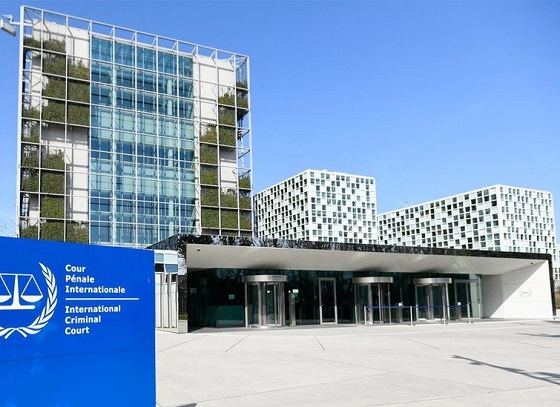
 Frontier Centre for Public Policy2 days ago
Frontier Centre for Public Policy2 days agoFalse Claims, Real Consequences: The ICC Referrals That Damaged Canada’s Reputation
-
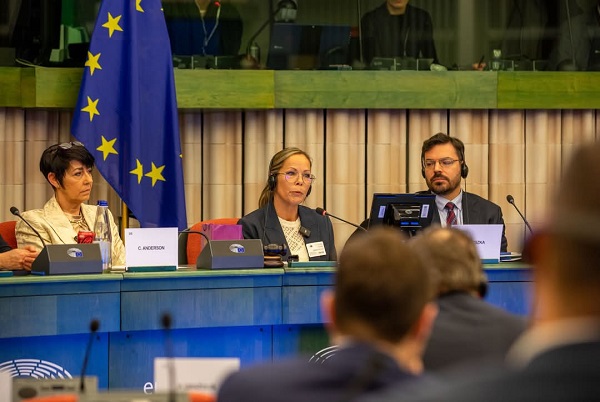
 COVID-192 days ago
COVID-192 days agoFreedom Convoy leader Tamara Lich calls out Trudeau in EU Parliament address for shunning protesters
-
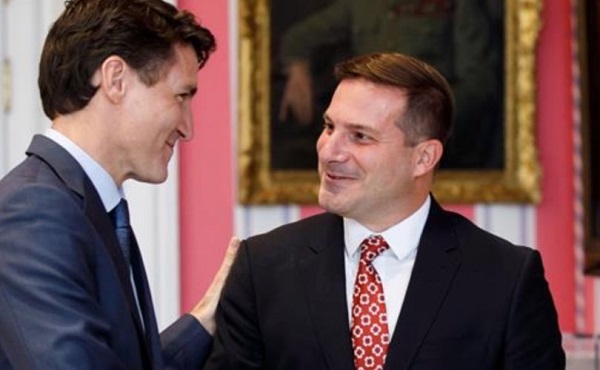
 COVID-191 day ago
COVID-191 day agoFormer Trudeau minister faces censure for ‘deliberately lying’ about Emergencies Act invocation
-
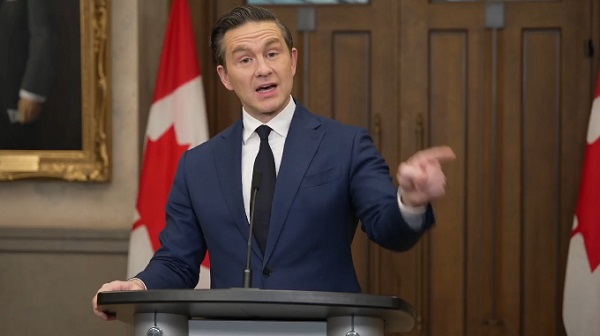
 National1 day ago
National1 day agoWhen’s the election? Singh finally commits. Poilievre asks Governor General to step in






